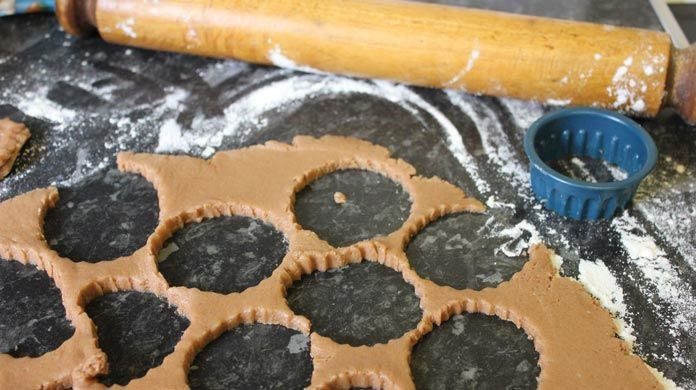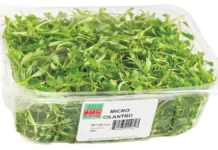
An Interview with Stephen Zagor, Dean, School of Restaurant and Culinary Management, Institute of Culinary Education, NYC
Waste in restaurant kitchens is a significant industry problem that affects all parts of the foodservice supply chain. The need to control it at all levels is paramount.

We spoke about this kitchen and food waste crisis with restaurant consultant Stephen Zagor, director of management programs at the Institute of Culinary Education in New York City. Zagor has more than 25 years of experience in the planning, development and management of a wide variety of restaurants and retail food businesses. He is also a clinical associate professor in the College of Food, Nutrition and Public Health at New York University, teaching courses in Food Business Entrepreneurship, Restaurant Marketing, and Hospitality Operational Problems.
After completing a degree at Tulane, Zagor graduated with a Master’s degree from Cornell’s School of Hotel Administration. Zagor began his career with stints for the Marriott Hotel corporation in DC, Philadelphia and St. Louis. He owned restaurants in Houston, Texas. In the course of his career, Zagor has developed and owned a multi-concept restaurant group, served as the general manager of a $10 million New York City restaurant, and owned and operated an award-winning limited service restaurant. For ten years, he was the manager of restaurant consulting services for the Hospitality Group of Laventhol & Horwath, and later for Coopers & Lybrand. Zagor recently participated in a panel discussion on this topic at The New School in New York City.
How serious is the issue of food waste in restaurants?
If I’m looking at it as the owner and the chef or someone that is trying to contain costs, I’d be absolutely shocked by how much is actually thrown away. From strictly financial and ethical perspectives, an awful lot of stuff gets thrown away that could be reused. In fact, I did a blog two or three months ago, responding to complaints about how high rents are in New York, and I commented that rents are high, no doubt about it, but at the same time the average restaurateur doesn’t really know how to operate. And most of that involves controlling costs in the kitchen. Operators don’t know how to price a recipe, they don’t know how to understand waste and reuse, and maximizing product usage. There’s just an enormous grey area that the average restaurateurs don’t know about and they don’t know that they don’t know.
The issue of menu pricing has become very acute in recent years. People have climbed the ladder in the industry without going to culinary school, where they would learn about this. While they were climbing the ladder, they spent time learning how to cook, learning how to serve and sell, but they don’t learn how to control.
Which operators are suffering from food waste?
If you looked at the business as a continuum, start with food manufacturers on one side. They know about food cost. When you get into the service world, like McDonald’s, they know how to control costs. They look at chain restaurants, they’re pretty good at it. There’s some table service, there’s some preparation and some central commissary. But they’re still slightly looser. Then there are the smaller chains and individual restaurants that are not that good at it. Next are the specialty restaurants, like ethnic restaurants that are individually owned, they’re definitely not good at it. Then there are the luxury restaurants, and they don’t care about it because they’re making money on the top line. They’re charging a lot. They are primarily concerned with the art of the food rather than the control of it. They look at volume coverage. They’re selling at $300 a person. At that level, they’re less concerned with waste than they are with getting patrons to order.
How much is lost in food waste?
Collectively, 30-40% could have been reusable in some form.
How does this happen?
Trimming. The biggest waste is going to be in the items that are trimmed and yield, which is edible portion as purchased versus edible portion. When you buy something in an as-purchased state, you have to trim it or somehow refine it to the edible portion state. That’s the first place. Either the specification isn’t correct or maybe you’re buying something that should have been partially trimmed or partially built into the cost of the product. Or you’re taking items that could have been reused but go into the garbage, or something that is a trimmed off of a protein item that could have been used but goes into the garbage. The cycle starts there and goes all the way through the preparation process with items that could have been multi used. For example, you can take the skin off of an apple and then use it for something else. Creativity is the soul of profits, it really is. It’s taking something that would be called usable trim as opposed to toss-away trim.
What can operators do to overcome this problem?
First, they need to know that there is a problem. They need to have an idea that something’s wrong because sometimes they don’t know. There’s a lot of formal training out there about this on the Internet, on YouTube, in culinary school. The problem is that everyone is so busy. Everyone gets so locked into their routines about what they do. They don’t always take a breath and ask “Can I do this better?” “Is there a way in which I can reshape this?” The real thinkers are constantly looking back and saying “OK, I’m doing it this way, now what can I do to make it better or more profitable? Can I change the specifications?” It’s almost a behavioral change. And behavioral changes are the hardest changes to make. We’ve done things the way we have forever. You have to have an outside eye. Let’s continue but let’s always keep that outside eye on how to do it better.
So education and training is part of the solution? Can consultants, the supply chain, distributors and manufacturers get involved?
Absolutely! But they, the operators, have to want change. They have to know that they don’t know and that’s the hardest part. There are such big egos in this business. We’re all doing it this way so it’s got to be the right way. I’ve worked as a consultant with many restaurants and many chefs and I love them because they’re so creative and interesting. They’re passionate. They’re incredible artists. But sometimes you have to bang their heads. I know you’ve been doing it this way but do you know that you haven’t weighed anything that’s come in the back door in 10 years? And vendors know that and they’re shorting you because they know that you’re not inspecting anything coming in the back door.
If waste is controlled, what will be the benefit for the operator and the industry?
First of all, less consumption. That would be a very green initiative because you’d certainly reduce the carbon footprint. It would certainly reduce consumption. It would reduce the amount of food that goes into our landfills. It would lower costs. It would put more money in the owners’ pockets. There would be a ripple effect of incredible nice things. Distributors would wonder if operators would then buy less. But I always tell operators buy right, not just buy.
What else can an operator do to control food waste?
Be careful during preparation. Prepare what you need. It’s almost better to run out rather than to over prepare. I actually favor smaller portions. We are a nation of mega portions which contribute to obesity and other horrible conditions. We can all live on less. Maintain your prices but reduce portions.
Is there anything that can be done in the front of the house to control waste?
Of course. Paper goods are one of the areas that drive waste there. Paper goods are enormously expensive. My students are shocked by how much paper goods cost. The percent of sales includes paper goods, towels, wraps, foil, garbage bags, laundry and linen. We, as an industry, are very careless on how we use our cloths. We are very indiscriminate because we look at speed and making the customer happy. We sometimes forget that we have to make money at this. Napkins cost 15 cents to launder and that could be 15 cents that we don’t need to spend. Rather than two napkins, we could give patrons one.
If food waste could be controlled, then that 30-40% could theoretically go back into the operator’s coffers?
A percentage of it at least. There will always be waste. You can’t have zero waste. But if operators could put half of it in their pockets, they could then certainly do creative things with those savings. They could increase their bottom lines by at least 10-20%.
This article originally appeared at thefoodserviceblog.com/interviews/























